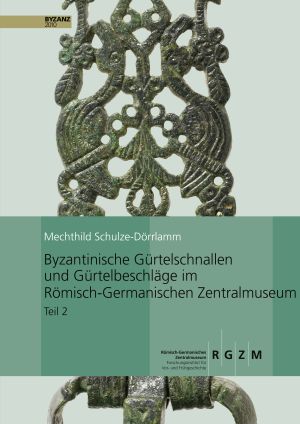
How to Cite
License

This work is licensed under a Creative Commons Attribution-ShareAlike 4.0 International License.
Published
Downloads
Byzantinische Gürtelschnallen und Gürtelbeschläge im Römisch-Germanischen Zentralmuseum
Die Schnallen ohne Beschläg, mit Laschenbeschläg und mit festem Beschläg des 5. bis 7. Jahrhunderts
The Römisch-Germanisches Zentralmuseum in Mainz currently owns 363 Byzantine belt buckles and fittings dating from the 7th to the early 11th century. Most of them come from the centre of the Byzantine Empire, where there are few cemeteries with grave goods and therefore few finds. These buckles therefore fill a major gap in our knowledge of this type of clothing accessory, even though they are all single pieces without any context.
Part 2 of the catalogue also shows the characteristics, dates and distribution areas of the various buckle types, and a chronological table makes it easier for the reader to date new finds. The analysis considers issues such as the history of craftsmanship, trade and costume, as well as the search for former owners. These were mainly men who used buckles not only to fasten their waist belts but also as a sign of rank, recognisable by the metal and decoration. For the first time, there is also evidence that women began to wear belt buckles in a gender-specific manner in the 9th century at the latest.
In a separate article, the conservator M. Fecht describes the results of her research into the manufacturing technique and the - mostly lost - colouring of Byzantine belt buckles from the 8th century.
As a supplement to Part 1, a catalogue of 33 subsequently acquired finds has also been included in this volume.
Ad Volume 1






